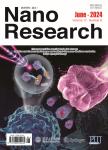Strain-tunable electronic and transport properties of MoS2 nanotubes
Strain-tunable electronic and transport properties of MoS2 nanotubes作者机构:Institute of High Performance Computing A*STAR Singapore 138632 Singapore National Supercomputer Center in Jinan Shandong Computer Science Center China
出 版 物:《Nano Research》 (纳米研究(英文版))
年 卷 期:2014年第7卷第4期
页 面:518-527页
核心收录:
学科分类:0808[工学-电气工程] 0809[工学-电子科学与技术(可授工学、理学学位)] 07[理学] 08[工学] 070205[理学-凝聚态物理] 080501[工学-材料物理与化学] 0805[工学-材料科学与工程(可授工学、理学学位)] 0803[工学-光学工程] 0702[理学-物理学]
主 题:MoS2 nanotube strain engineering semiconductor-to-metaltransition carrier mobility density functional theory
摘 要:Using density functional theory calculations, we have investigated the mechanical properties and strain effects on the electronic structure and transport properties of molybdenum disulfide (MoS2) nanotubes. At a similar diameter, an armchair nanotube has a higher Young's modulus and Poisson ratio than its zigzag counterpart due to the different orientations of Mo-S bond topologies. An increase in axial tensile strain leads to a progressive decrease in the band gap for both armchair and zigzag nanotubes. For armchair nanotube, however, there is a semiconductor-to-metal transition at the tensile strain of about 8%. For both armchair and zigzag nanotubes, the effective mass of a hole is uniformly larger than its electron counterpart, and is more sensitive to strain. Based on deformation potential theory, we have calculated the carrier mobilities of MoS2 nanotubes. It is found that the hole mobility is higher than its electron counterpart for armchair (6, 6) nanotube while the electron mobility is higher than its hole counterpart for zigzag (10, 0) nanotube. Our results highlight the tunable electronic properties of MoS2 nanotubes, promising for interesting applications in nanodevices, such as opto-electronics, photoluminescence, electronic switch and nanoscale strain sensor.



